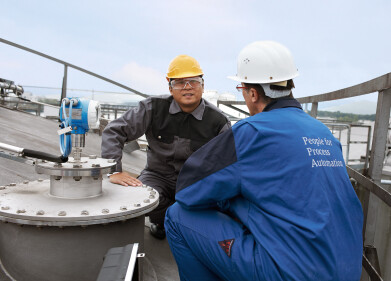Analytical Instrumentation
Professional Ion Chromatography from Metrohm Used to Assay the Anion Profile of Cement
Mar 05 2008
The characteristic of cement is that after it has beenmixed with water it will set hard as rock and will bind any rock or mineral fragments mixed with it. Mortar is made from a mixture of sand and cement, and bonds together bricks in a wall. Most cement is mixed with both sand and aggregate to make concrete.
The quality of the finished product cement is determined by the raw materials that are used to make cement’s chemistry, and the process by which the chemistry is created in the kiln. Fluoride negatively impacts on cement quality; it affects the cement’s strength and also the rate at which it sets, both of which are crucial factors.
Chlorine and sulfate are minor oxides in cement, coming from the raw materials used to make cement (limestone and shale) and the fuels that are used to power the kiln (e.g. car tyres or coal). These compounds negatively affect operation of the kiln and must therefore be tightly controlled. Chloride and sulfate are volatilised in the high
temperatures of the kiln, and then blown by hot gases to the entrance of the kiln, where it is cooler, before they condense back into their original material. The process occurs in cycles and leads to an accumulation of chlorine and sulfate that can cause great problems with kiln stability.
Phosphate is a minor oxide that occurs in the raw materials used in the cement manufacturing process. Phosphate has a negative effect on cement resistance if it represents greater than 0.5% total of the cement. The 850 Professional IC and 858 Sample Processor are the result of more than 20 years of creative solutions through Research and Development to the field of IC and represent the third generation of IC instruments to come fromMetrohm. Intelligence comes as standard with the Professional
IC systems and features hardware specifications not available anywhere else in the marketplace: iPump with 15% less pulsation compared to previous designs that ultimately yields lower detection limits.
iDetector with a single range that no longer requires the correct selection of scale or the use of auto-ranging. The latest Digital Signal Processing and outstanding temperature stability guarantee the highest precision. Example chromatograms are stored in the detector for validation or training purposes. iColumn the only IC columns available today equipped with intelligence that automatically knows their optimum
working conditions and possess full traceability with regard to number of injections performed, operating pressure and flow rates. Dosing with Dosino™technology for very accurate liquid dispensing of volumes as low as 1ìl. The Dosio™technology is utilised for pre-concentration when working at trace levels or can be used for automatically inline
sample dilution in combination with the intelligent MagIC Net software. MagIC Netâ„¢ software with smart system control and monitoring of all results. Trending of any chromatographic parameter from a method is only a mouse click away so visually all the necessary information can be shown graphically over time.
The Professional IC (ProfIC) systems comprise 11 different base modules but due to the modularity and expandability of the design any instrument can be converted into a differentmodel, for example a single chemistry can be converted to a dual chemistry if the analytical requirements change over time.
Size is every increasingly an issue in most laboratories and the 850 Professional IC and 858 Professional Sample Processor occupy a footprint of only 64cm width on the bench. The MagIC Netâ„¢ software is the next generation of chromatographic software fromMetrohm. The software has been completely developed in-house and has a similar
view on first appearance to the outstanding tiamoâ„¢ software so existing titration users will have an instant empathy with MagIC Netâ„¢. The prime consideration during development of MagIC Netâ„¢ was to develop an intuitive software platform that was easily used in the event of novice operation but for the skilled user represents a powerful data acquisition and processing package with all the information readily available.
All system parameters are monitored and optimised through the MagIC Netâ„¢
software with its smart control. Control cards for calibration and samples can be freely defined and should an important parameter leave a predefined tolerance than the laboratory user is informed by either email or SMS text message. Particular attention has been given to
the long service interval of the Professional IC instruments and these can all be observed through theMagIC Netâ„¢ software along with the expiration date of all solutions, eluents and consumable hardware parts.
The results are safely stored in a database that fully complies with the analytical requirements of the FDA and the data can easily be exported into a LIMS systems or a package like Microsoft Excel®. MagIC Net™ is a client server based data system that provides configurable user interfaces with the results stored in a single central database
where they can be viewed and reprocessed by all client PC’s. Network users can access the search and filter tools, control instruments, individually customise reports and execute sample tables through a few clicks of the mouse. The system administrator decides upon the new users and assigns individual access rights to both data and methods.
The determination of the anions fluoride, chloride, sulfate and phosphate in cement is a relatively simple process. A few hundred milligrams of dry product are added to a little ultra pure water and then a few hundred microlitres of concentrated acid (for example nitric) are added to extract the solid cement ions into solution. Once cessation of carbon dioxide has occurred then the cement solution is diluted with ultra pure water and the pH elevated with a fewmicrolitres of sodiumhydroxide to neutralise the solution. Typical dilution would be in the region of 1:1000 and the diluted solution is injected
directly into the Ion Chromatograph via the use of a Sample Processor. The results for all four anions are obtained in less than 25minutes and the separation performed using the temperature selective A SUPP 15 column from Metrohm.
Depending upon the composition of the cement then the diluted cement solution may contain solid pieces of aggregate not dissolved by the acid. These particles could have a detrimental on the lifetime of the separation column (usually the main consumable item) should they get onto the column so it is recommended to remove any such particles prior to injection. These can be removed using filtration through filter
paper or the use of syringe filters prior to sample loading. Both of these are time consuming procedures that increase the sample preparation time and in the case of syringe filters they can add considerable running costs to the analysis.
Metrohm has a number of Inline Sample Preparation Modules (MISP) that can be used to automate difficult sample matrices. The use of inline ultra-filtration considerably increases the sample throughput by automatic filtration of each sample using the unique Metrohm ultra-filtration cell. Inline preparation saves the user a lengthy manual
sample pre-treatment step and at the same time minimises the operational costs.
The ultra-filtration cell is fed bymeans of a dual channel pump system, as the sample is processed it is fed into the bottom chamber of the ultra-filtration cell and along the standardmembrane to waste. The pump creates a vacuumin the upper chamber and this draws a portion of the sample typically 20% (the other 80% goes to waste) across the
ultra-filtrationmembrane and the filtered sample is then transported to the sample loop from where it is introduced onto the separation column. The arrangement of the ultra-filtration cell and the fact that the majority of the sample goes straight to waste helps to avoid the formation of filter cake that would ordinarily block the membrane.
Ultra-filtration can be added to any Metrohm IC system and represents a convenient, cost effective way of helping to extend the lifetime of the separation column.
To learn more about how Professional IC systems from Metrohm can be used to determine anions in cement or how Metrohm Inline Sample Preparation can solve your specific application then please visit their website.
Digital Edition
PIN 25.1 Feb/March
March 2024
In This Edition Safety - The technology behind the ION Science Tiger XT - Safety with ammonia and LOHCs as hydrogen carriers Analytical Instrumentation - Discussion on new tribology te...
View all digital editions
Events
Apr 22 2024 Hannover, Germany
Apr 22 2024 Marrakech, Morroco
Apr 22 2024 Muscat, Oman
Apr 22 2024 Rotterdam, Netherlands
Apr 23 2024 Singapore


















